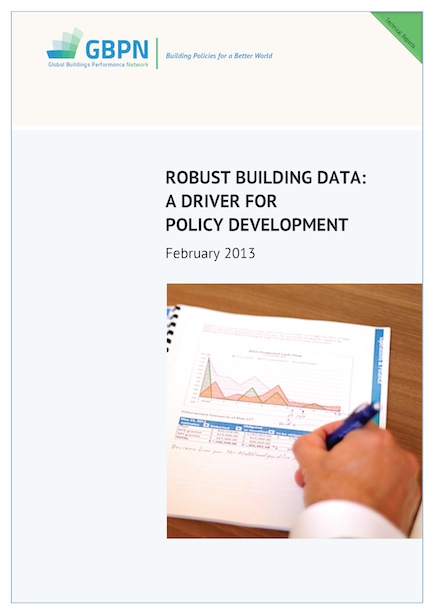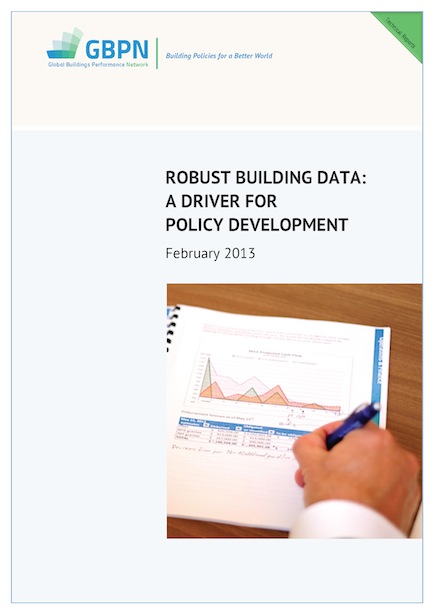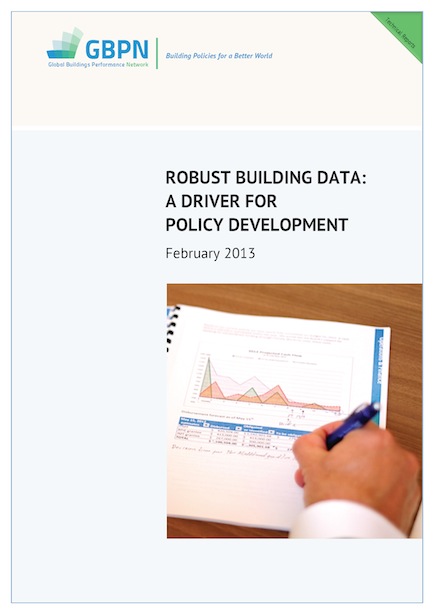印度建筑的减排潜力
 可靠证据表明,至2050年印度建筑领域会产生巨幅能源增长,基于此估测,本报告分析了印度目前建筑节能减排的政策框架及其节能潜力。
可靠证据表明,至2050年印度建筑领域会产生巨幅能源增长,基于此估测,本报告分析了印度目前建筑节能减排的政策框架及其节能潜力。
16 result(s) found
 可靠证据表明,至2050年印度建筑领域会产生巨幅能源增长,基于此估测,本报告分析了印度目前建筑节能减排的政策框架及其节能潜力。
可靠证据表明,至2050年印度建筑领域会产生巨幅能源增长,基于此估测,本报告分析了印度目前建筑节能减排的政策框架及其节能潜力。
 本报告就四个地区数据质量和数据的可利用性问题进行了分析,同时也提醒了我们需要完成多少工作才能建成一个强大而全面的建筑数据库,并提出了实现这个数据库的可行性建议。
本报告就四个地区数据质量和数据的可利用性问题进行了分析,同时也提醒了我们需要完成多少工作才能建成一个强大而全面的建筑数据库,并提出了实现这个数据库的可行性建议。
 本报告就四个地区数据质量和数据的可利用性问题进行了分析,同时也提醒了我们需要完成多少工作才能建成一个强大而全面的建筑数据库,并提出了实现这个数据库的可行性建议。
本报告就四个地区数据质量和数据的可利用性问题进行了分析,同时也提醒了我们需要完成多少工作才能建成一个强大而全面的建筑数据库,并提出了实现这个数据库的可行性建议。
 Data Annex
Data Annex
Discover where things stand regarding building energy data quality and availability in our four regions, this report reminds us of how far we have to go before a robust and comprehensive set of building data is in place and provides some recommendations of how we can get there.
 The Economist Intelligence Unit (EIU) report "Achieving scale in energy-efficient buildings in India: A view from the construction and real estate sectors" commissioned by the GBPN explains the challenges and opportunities of investing in energy efficiency in buildings in India.
The Economist Intelligence Unit (EIU) report "Achieving scale in energy-efficient buildings in India: A view from the construction and real estate sectors" commissioned by the GBPN explains the challenges and opportunities of investing in energy efficiency in buildings in India.
 A report from the Economist Intelligence Unit (EIU), commissioned by the GBPN finds that while India’s commercial building sector has blazed the energy-effiency trail in the building sector, achieving significant scale will depend on efficiency measures becoming standard practice in the commercial middle market, retrofit and, particularly, the residential building segment.
A report from the Economist Intelligence Unit (EIU), commissioned by the GBPN finds that while India’s commercial building sector has blazed the energy-effiency trail in the building sector, achieving significant scale will depend on efficiency measures becoming standard practice in the commercial middle market, retrofit and, particularly, the residential building segment.
 Executive Summary
Executive Summary
GBPN conducted a study on the factors affecting the use of ESCO models for the retrofit of existing buildings in China, identifying current barriers to the development of the Chinese ESCO market, while also researching best-practice examples of ESCOs globally and investigating the feasibility of introducing those examples to China.
In order to achieve long-term targets for energy savings and emission reductions, substantial savings will be needed from existing buildings. For example, a recent analysis for the USA examines aggressive strategies to cut carbon emissions in half by 2040 and finds that in order to achieve this emission reduction target, more than half of existing buildings will need comprehensive energy efficiency retrofits. Germany is targeting an overall primary energy consumption reduction of 50% in 2050 including increasing building renovation rate to 2% per year.
EU member states have been encouraged to introduce energy efficiency obligation schemes (EEOS) to help meet energy saving objectives. As a result, there are now 15 EU EEOS in existence, compared with just six prior to the introduction of the 2012 Energy Efficiency Directive. At the same time, the long-standing EEOS in Denmark and the UK have faced challenges because of concerns over increasing costs. This paper considers the role of EEOS in current and future EU and national policy. Firstly, this paper sets out in more detail the place of EEOS in EU energy policy.
This report sets out the positive and negative impacts of improvements in energy efficiency in buildings that could come about through a recast of the Energy Performance Buildings Directive (EPBD). Successive studies have shown that energy efficiency offers many of the most cost-effective options for meeting global emission targets. In many cases, energy efficiency measures have been shown to be ‘negative cost’, meaning that it would be economically advantageous to implement them.
Global warming and environment problems caused by the excessive emission of greenhouse gases (GHGs), along with rapid economic development has attracted the attention of many countries and regions of the world. Reducing GHG emissions is essential to mitigate the threat of global warming. Household carbon (dioxide) emissions have been recognized as one of the most important contributors to climate change, with a significant impact on both the local and global environment, and various policy instruments have been implemented by governments to bring about the reduction.
The work carried out by Copenhagen Economics for the Renovate Europe Campaign broke new ground in the debate around the benefits of investing in energy efficiency and has, in several ways, advanced the EU agenda in this topic. In executing the contract for us, Copenhagen Economics were professional, impartial and eloquent. I would unhesitatingly use their services again.
In this study, we analyze the demand for green office building features among office tenants in the United States. An online survey of a random sample of office tenants in 17 major U.S. markets is employed. Respondents provided their perspective on green buildings and their willingness-to-pay (WTP) for green features. They have the highest WTP for improved indoor air quality and access to natural light. The results show that public firms, along with those in the energy and information technology industries are most likely to pay for green-labeled buildings.